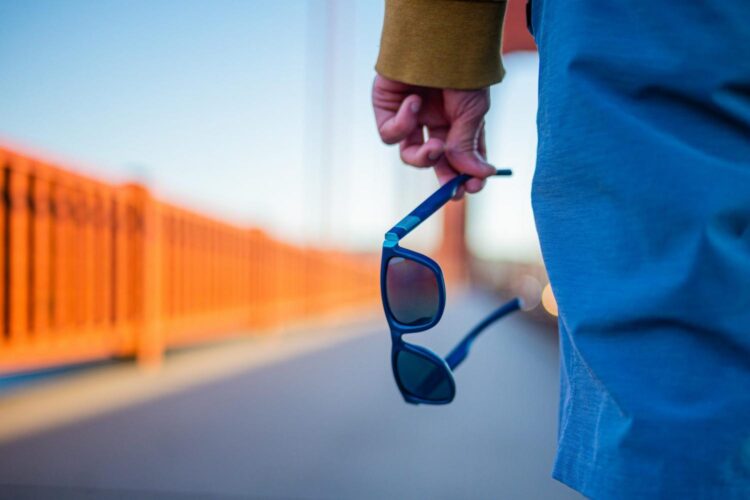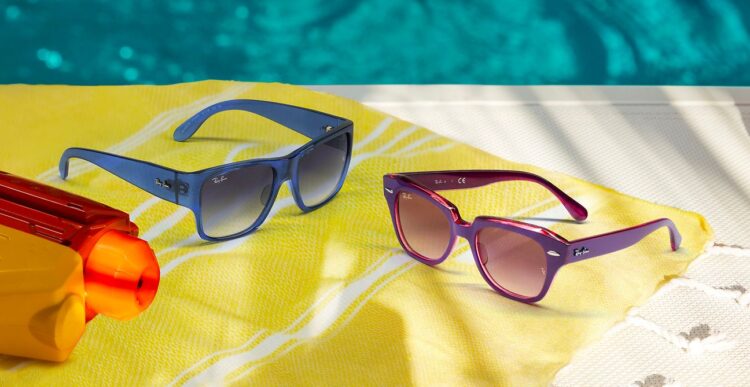Every time you’re looking to buy a new pair of sunglasses, you’ll be given a variety of choices for the material. There are many excellent sunglasses available on the market, but before you purchase a pair, it is crucial to weigh their benefits and drawbacks. The weight, thickness, flexibility, scratch resistance, and other characteristics of the various lens materials vary.
They also affect your look, comfort, and vision. In light of this, you must choose wisely to avoid receiving a useless item.
We will address mainly plastic and polycarbonate sunglasses in this post, as well as the critical distinctions between the two types of sunglasses materials.
What is Polycarbonate?
Plastic material is called polycarbonate. It is extraordinarily strong and hence quite difficult to break. It is also a polymer, and polymers typically have carbonate groups in their monomer units. They are known as polycarbonates as a result.
Polycarbonates are solid and resistant materials. It does not distort when exposed to temperatures as low as -40 °F or as high as 280 °F. It is additionally transparent to visible light.
It may also be bent and used to create glasses of identical thickness and has a high refractive index. These materials can be used to create very thin lenses that bend light more than glass or plastic.
What is Plastic?

Both non-prescription and prescription sunglasses can use plastic frames because they are often thicker and come in a wide range of colors and styles. Generally, plastic frames are less expensive than metal equivalents, but designer sunglasses can be rather expensive.
Depending on your lifestyle, your requirement for prescription lenses, and your sense of style, some plastic frame options for sunglasses may be better than others.
Want to look fashionable while providing UV protection for your eyes? Check out plastic sunglasses at nomadeyewear.co.uk.
Benefits of Polycarbonate Sunglasses
- For a variety of reasons, eyewear manufacturers prefer to employ polycarbonate. This substance contributes to the creation of glasses that are of the highest caliber, secure, and long-lasting. Sunglasses made of polycarbonate may be difficult to break. It can prevent lenses from splintering.
- Thus, the majority of people who engage in sports and driving favor polycarbonate eyewear. Another aspect to take into account while selecting sunglasses is comfort. It can withstand heat. You can check your sunglass material by putting it into extreme temperatures.
- Because it is so much lighter than conventional sunglasses material, it is a better alternative for almost all sunglass wearers, which is one of the reasons it has been such an excellent material for the sunglass industry.
- Glasses made of polycarbonate are thin and ideal for all applications. It is best to use if you require UV protection or prescription lenses. The best part is that polycarbonate’s ultraviolet protection is entirely reliable. UV radiation can hasten eye aging and result in significant eye diseases. Whether UV light is created by man or the environment, it is feasible to protect the eyes from its adverse effects. It is also suitable for those with stronger prescriptions and larger lenses.
Benefits of Plastic Sunglasses

- Plastic materials are well known for being stronger to a certain extent while also being lighter. Plastic is an excellent material for eyeglass frames since it is lightweight and allows for an easy fit.
- Plastic production raw materials are reasonably priced and simple to obtain in the appropriate quantities. These goods can also be swiftly and cheaply transformed into the required form. A plastic eyeglass is therefore inexpensive and accessible.
- Most of the time, high-quality raw materials are refined using sophisticated processes and systems to create the plastic needed for optical applications. Plastic eyeglasses are incredibly transparent and can be used to boost visual clarity and improve vision.
- Compared to other materials, plastic readily absorbs colors. Applying and treating plastic lenses with an ultraviolet (UV) protective coating is simple. When exposed to intense light, a photochromic lens will easily darken, and when there is not enough light, it will become lighter.
- Sunglasses made of plastic are better for children since they are more durable and come in a greater variety of colors and styles. With their more oversized frames and readily dyeable plastic material, eyeglasses may be made in various styles, from understated and fashionable to vibrant and outrageous.
How To Tell If Your Sunglasses Are Plastic or Polycarbonate?
- Although they perform many of the same tasks, polycarbonate and plastic differ significantly in other ways. They handle temperature very differently, which is a significant difference. Polycarbonate is much more similar to a thin, smooth material that holds heat and cold far better than plastic, which often resists any substantial temperature change.
- The following technique, which you might not want to do but might be entertaining if you’re using an old pair you don’t intend to wear, is to test the scratch resistance figuratively. Instead of counting and guessing, try marking the edge of one of the glasses with a small, sharp knife. It is plastic if you can make a scratch on it. If not, they are probably made of polycarbonate.
- Always feel free to ask your optician. Your eyes are not being tested by them. An optician is the friendly staff member at the eyeglass store who helps you choose a pair of frames, notes the location of the center of focus on each eye, and assists you in properly fitting the glasses to your face once they are eventually delivered. Choosing high index lens types are particular materials are some topics that these opticians frequently discuss with customers.

Conclusion
Finally, it’s up to you to choose a material. There are many articles and posts out there that actively assert and support plastic as the superior choice because of its accessibility and excellent quality. When looking for new glasses, make sure to inquire about the materials available. Then, using the knowledge you have gained about both materials, you can decide which will best meet your needs.
 Hi Boox Popular Magazine 2024
Hi Boox Popular Magazine 2024



